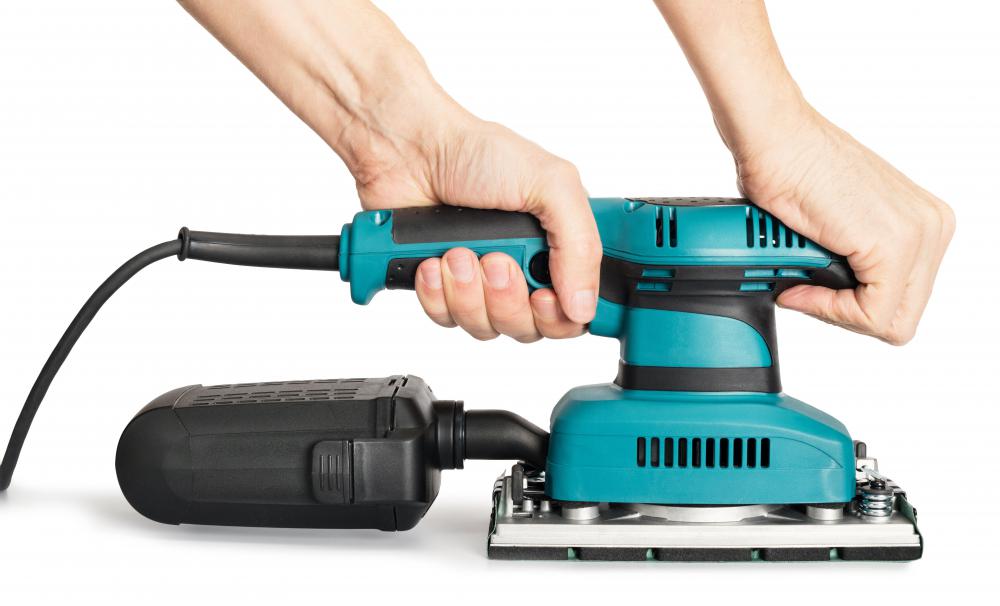At WiseGEEK, we're committed to delivering accurate, trustworthy information. Our expert-authored content is rigorously fact-checked and sourced from credible authorities. Discover how we uphold the highest standards in providing you with reliable knowledge.
How do I Repair Water Damaged Drywall?
Repairing water damaged drywall involves cutting away the damaged drywall and replacing it with new drywall. In most cases, there is a leak that also needs to be fixed, otherwise, the entire repair will be in vain. Once the damage has been repaired, the spot will typically need to be sanded and painted to blend in with its surroundings. This job does not have to be completed by a professional, but a do-it-yourself handyman will need a variety of tools, materials, and safety equipment.
Gathering the tools is the first step to repairing water damaged drywall. The repairer will need a drywall saw and drywall knife to remove the damaged bit of drywall. He or she will also need a new piece of drywall, tools for placing the patch, and joint compound, which is also known as drywall compound and is similar to plaster. Finally, a joint knife is needed to spread the joint compound, along with joint tape, and sandpaper. For maximum safety when repairing water damaged drywall, it is best to wear safety goggles, heavy-duty gloves, and a mask to cover the mouth.

Once all the tools have been gathered, the repairer should remove the damaged piece of drywall with the saw and knife. Nails should be removed to pull the piece free of the wall or ceiling. After, the new drywall piece can be secured in place, and the joints can be sealed with a joint compound using the joint knife. Joint tape is applied over the joint compound, then more joint compound is layered over the tape. At this point, the joint compound should be left to completely dry.

To proceed, the joint compound should be hard and not give when touched. If the compound has hardened, it is time to apply more joint compound across the entire patch to level it out. Thin coats of compound should be applied, allowed to dry completely, then applied again until the area is level with the surrounding wall. It does not have to be entirely smooth because the excess can be sanded down later. The main focus should be on leveling the patch to be flush with the surrounding wall or ceiling.

Once the home is rid of the water damaged drywall and the new patch is entirely dry, the area can be sanded to smooth it out. The sanding can be performed manually or by an electric sander. When the sanding is completed, the area can be primed and painted to match the rest of the wall or ceiling.
AS FEATURED ON:
AS FEATURED ON:














Discuss this Article
Post your comments